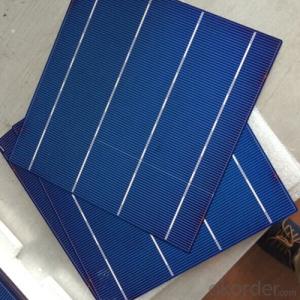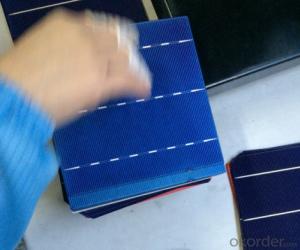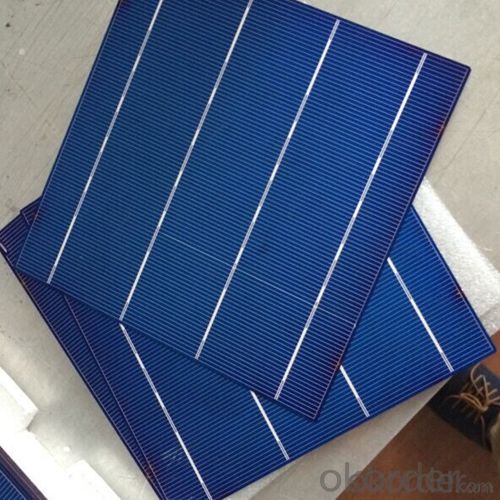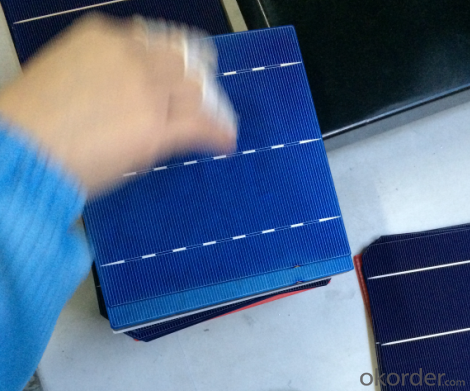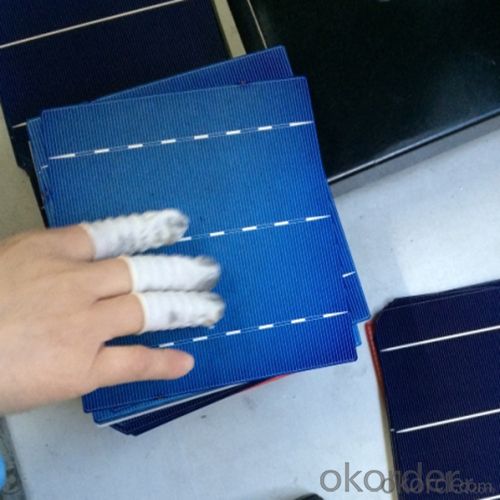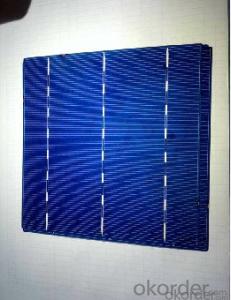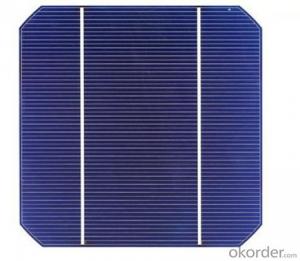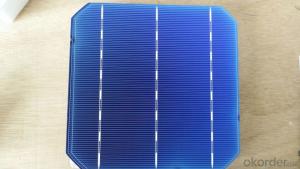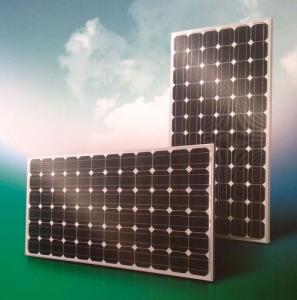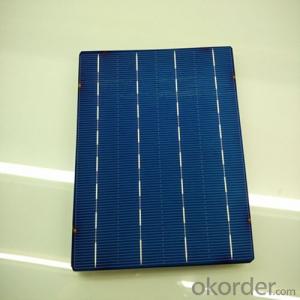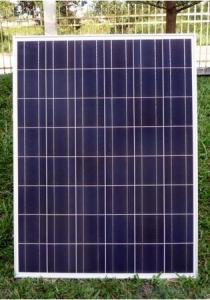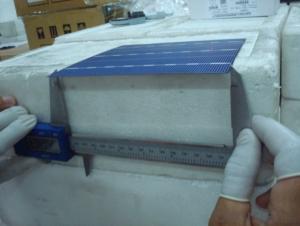Elon Musk Inspired Poly 3bb 4bb Solar Cells with Low Price 156*156mm
- Loading Port:
- Shanghai
- Payment Terms:
- TT or LC
- Min Order Qty:
- 30000 pc
- Supply Capability:
- 3000000 pc/month
OKorder Service Pledge
OKorder Financial Service
You Might Also Like
Product description
Poly Solar Cells 156*156mm B Grade Low Price 3BB 4BB
A solar cell, or photovoltaic cell, is an electrical device that converts the energy of light directly into electricity by the photovoltaic effect, which is a physical and chemical phenomenon.[1] It is a form of photoelectric cell, defined as a device whose electrical characteristics, such as current, voltage, or resistance, vary when exposed to light. Solar cells are the building blocks of photovoltaic modules, otherwise known as solar panels.
Solar cells are described as being photovoltaic irrespective of whether the source is sunlight or an artificial light. They are used as a photodetector (for example infrared detectors), detecting light or other electromagnetic radiation near the visible range, or measuring light intensity.
In contrast, a solar thermal collector supplies heat by absorbing sunlight, for the purpose of either direct heating or indirect electrical power generation from heat. A "photoelectrolytic cell" (photoelectrochemical cell), on the other hand, refers either to a type of photovoltaic cell (like that developed by Edmond Becquerel and modern dye-sensitized solar cells), or to a device that splits water directly into hydrogen and oxygen using only solar illumination.
Advantage Of Poly Solar Cell 4BB 3BB
1: High quality cell, Level B cell (14%—17.5%)
2.Dimensione:156*156mm Diagonal:200mm
3: Qualified certification: TUV,CE certification.
4: Warranty: five years for whole unit
Usage/Application Of Poly Solar Cell 4BB 3BB
1.The absorption of light, generating either electron-hole pairs or excitons.
2.The separation of charge carriers of opposite types.
3.The separate extraction of those carriers to an external circuit.
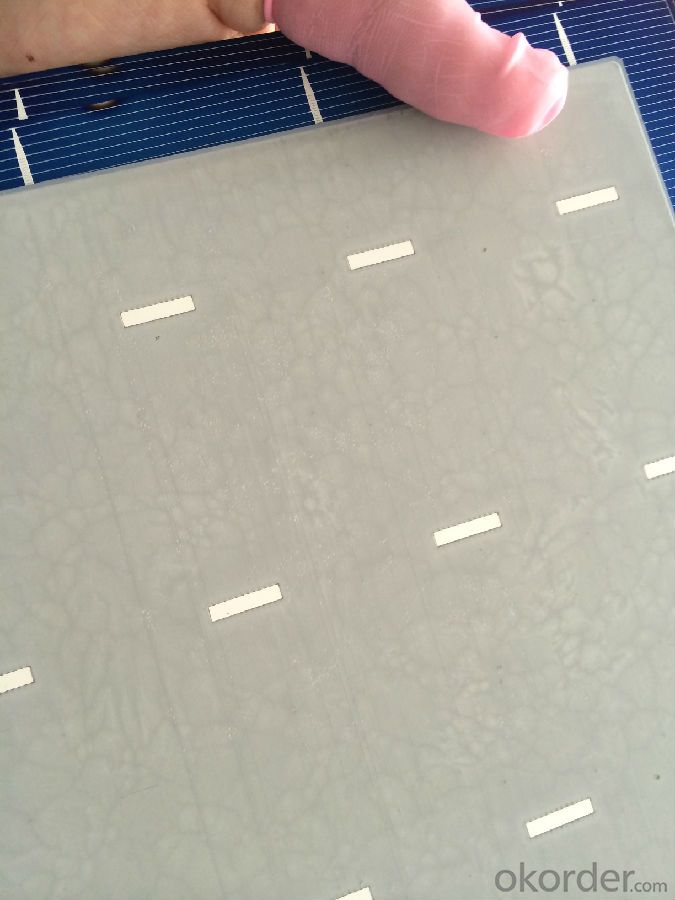
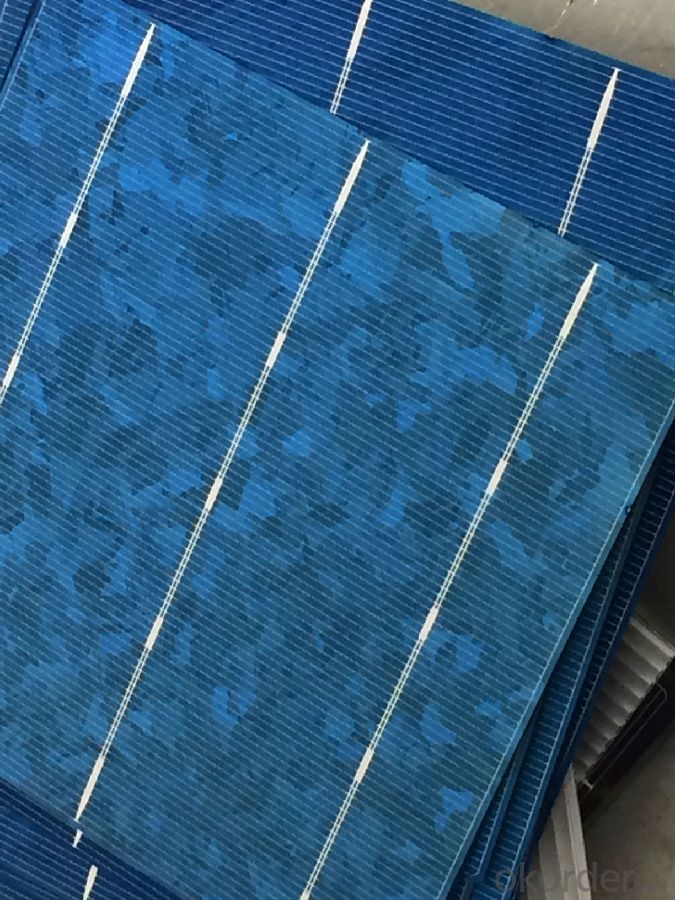
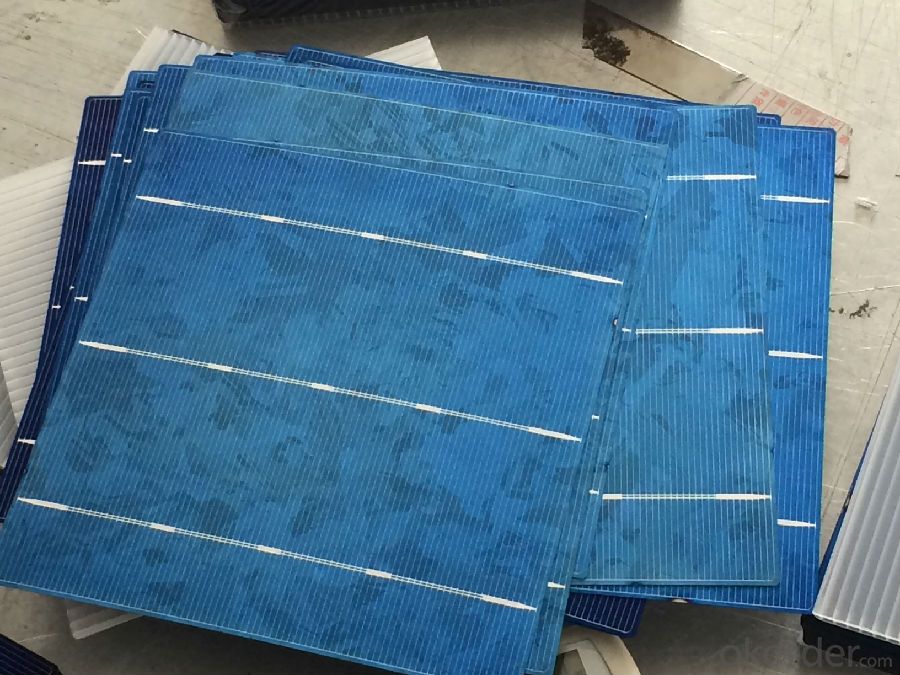
Electrical Characteristic
Efficiency (%) | Pmpp (W) | Umpp (V) | Impp (A) | Uoc (V) | Isc (A) | FF (%) |
17.25 | 4.197 | 0.524 | 7.992 | 0.62 | 8.458 | 80.03% |
17 | 4.137 | 0.524 | 7.876 | 0.619 | 8.353 | 80.01% |
16.75 | 4.076 | 0.522 | 7.81 | 0.617 | 8.286 | 79.73% |
16.5 | 4.015 | 0.518 | 7.746 | 0.613 | 8.215 | 79.73 |
16.25 | 3.955 | 0.515 | 7.683 | 0.61 | 8.144 | 79.61% |
16 | 3.894 | 0.512 | 7.613 | 0.608 | 8.075 | 79.31% |
15.75 | 3.833 | 0.51 | 7.534 | 0.605 | 8.058 | 78.62% |
15.5 | 3.772 | 0.508 | 7.453 | 0.604 | 8.02 | 77.87% |
15.25 | 3.771 | 0.505 | 7.35 | 0.604 | 9.997 | 76.83% |
15 | 3.65 | 0.503 | 7.271 | 0.604 | 7.989 | 75.64% |
14.5 | 3.529 | 0.499 | 7.067 | 0.604 | 7.988 | 73.14% |
14 | 3.407 | 0.499 | 6.833 | 0.604 | 7.833 | 72.01% |
Intensity Dependence
Intensity [W/m2] | Isc× [mA] | Voc× [mV] |
1000 | 1.00 | 1.000 |
900 | 0.90 | 0.989 |
500 | 0.50 | 0.963 |
300 | 0.30 | 0.939 |
200 | 0.20 | 0.920 |
Packaging & Delivery Of Poly Solar Cell 156mm | |
Packaging Detai | Packaging Detail:Export Carton and Pallet or under customer request. |
Delivery Detail:10-20days | |
FAQ
Q:What price for each watt?
A:It depends on the quantity, delivery date and payment terms
Q:What is your warranty system?
A:Our Solar cells performance guarantees for 25 years
Q:How do you pack your products?
A:We have rich experience on how to pack thecells to make sure the safety on shipment when it arrives at the destination.
Brief introduction of 4bb solar cell
4bb solar cells through the photoelectric effect or photochemical effect directly convert light into electrical energy, which makes use of the photoelectric conversion principle of solar radiation through the semiconductor material electrical energy transformed into a device; the photoelectric conversion process is usually called "photovoltaic hit "affect, therefore, solar cells, also known as" photovoltaic cells.
Working principle of 4bb solar cell
Foundation of working principle of 4bb solar cell is the "photovoltaic" effect semiconductor PN junction. The so-called photovoltaic effect, simply put, is that when the object is exposed to light, its charge distribution in vivo to produce an effect of EMF and current changes. In gases, liquids and solids can produce this effect, but in solid, especially in the semiconductor, solar energy is converted to electrical energy efficiency is particularly high, so the semiconductor photoelectric effect aroused special attention, the most studied, and invention of manufacturing a semiconductor solar cells.
When sun lights PN junction, the electrons in the semiconductor due to the availability of light energy and release electrons, and accordingly will produce electron - hole pairs, and the role of the barrier electric field, electrons are driven to the N-type region, holes are driven to the P-type region so that the region has a surplus of electrons N, P region has excess holes; so in the vicinity of the PN junction formed with the barrier electric field in the opposite direction of photo-generated electric field. Light green part of the field of offset barrier electric field, the rest of the P-type region is positively charged, N-type region is negatively charged; so he makes the force N region and a thin layer of P zone between the generation, namely "photovoltaic" electromotive force. When the external circuit is turned on, there will be power output.
This is the basic principle of the PN junction contact silicon 4bb solar cell power generation. If the dozens, hundreds of solar cells in series, in parallel become encapsulated solar cell module in the sunlight irradiation, the power can be obtained with a certain power output
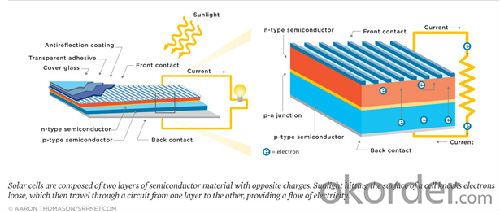
- Q: Many people said the usage of solar cell can reduce the cost overall, but does anyone agree with me that it actually cost a lot to operate a solar cell system?
- The reason why people said that is because the solar cell is using the sunlight, which is a free resources.
- Q: What are the advantages of monocrystalline silicon and polycrystalline silicon in solar power?
- In the use of solar energy, monocrystalline silicon and polysilicon also play a huge role. Although the current terms, to make solar power has a larger market, the majority of consumers to accept, we must improve the efficiency of solar cell photoelectric conversion, reduce production costs. From the current development of international solar cells can be seen that the development trend of monocrystalline silicon,
- Q: Are solar cells weather-resistant?
- Yes, solar cells are weather-resistant. They are designed to withstand various weather conditions, including rain, snow, and extreme temperatures, without significant damage to their functionality.
- Q: Are solar cells affected by electromagnetic radiation?
- Yes, solar cells are indeed affected by electromagnetic radiation. They are designed to convert sunlight, which is a form of electromagnetic radiation, into electricity.
- Q: How does the photovoltaic cells work?
- Photovoltaic solar cells are the thin silicon chips that transform the sunlight into electricity in a scientfic way.
- Q: Can solar cells be used in desert areas?
- Yes, solar cells can be used in desert areas. In fact, desert areas are considered to be ideal locations for solar energy production due to their high levels of solar radiation and clear skies. The abundance of sunlight allows solar cells to generate electricity efficiently, making them a suitable and sustainable energy solution for desert regions.
- Q: Can solar cells be used underwater?
- No, solar cells cannot be used underwater as they rely on sunlight to generate electricity. Water blocks sunlight and prevents the solar cells from functioning effectively.
- Q: How do solar cells impact energy poverty?
- Solar cells can greatly alleviate energy poverty by providing access to clean and affordable electricity to communities without reliable power grids. Solar energy is a sustainable and renewable source that can be harnessed even in remote areas, reducing dependence on fossil fuels and expensive fuel imports. This technology empowers individuals and businesses to generate their own electricity, improving quality of life, supporting economic development, and enabling access to essential services such as lighting, education, healthcare, and communication.
- Q: Can solar cells be used on spacecraft?
- Yes, solar cells can be used on spacecraft. In fact, solar cells are commonly used to provide power to satellites and space probes. They convert sunlight into electricity, which is then used to power various systems and instruments onboard the spacecraft.
- Q: Can solar cells be used for powering drones?
- Yes, solar cells can be used for powering drones. By converting sunlight into electricity, solar cells can provide a renewable source of power to drones, reducing the need for traditional batteries and increasing flight duration. Additionally, solar-powered drones have the potential to operate for extended periods without the need for frequent recharging, making them more sustainable and cost-effective in various applications.
Send your message to us
Elon Musk Inspired Poly 3bb 4bb Solar Cells with Low Price 156*156mm
- Loading Port:
- Shanghai
- Payment Terms:
- TT or LC
- Min Order Qty:
- 30000 pc
- Supply Capability:
- 3000000 pc/month
OKorder Service Pledge
OKorder Financial Service
Similar products
Hot products
Hot Searches
Related keywords
